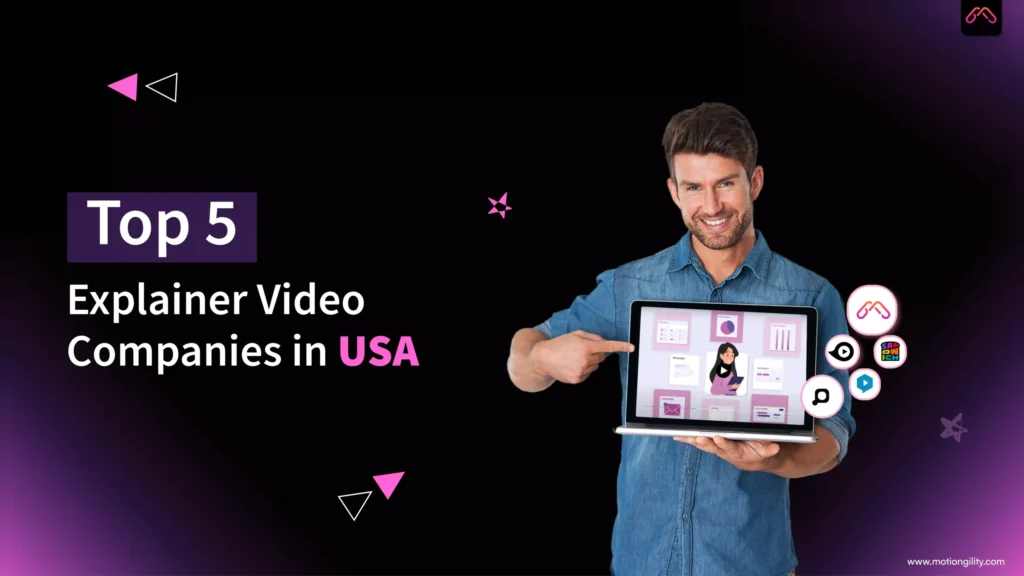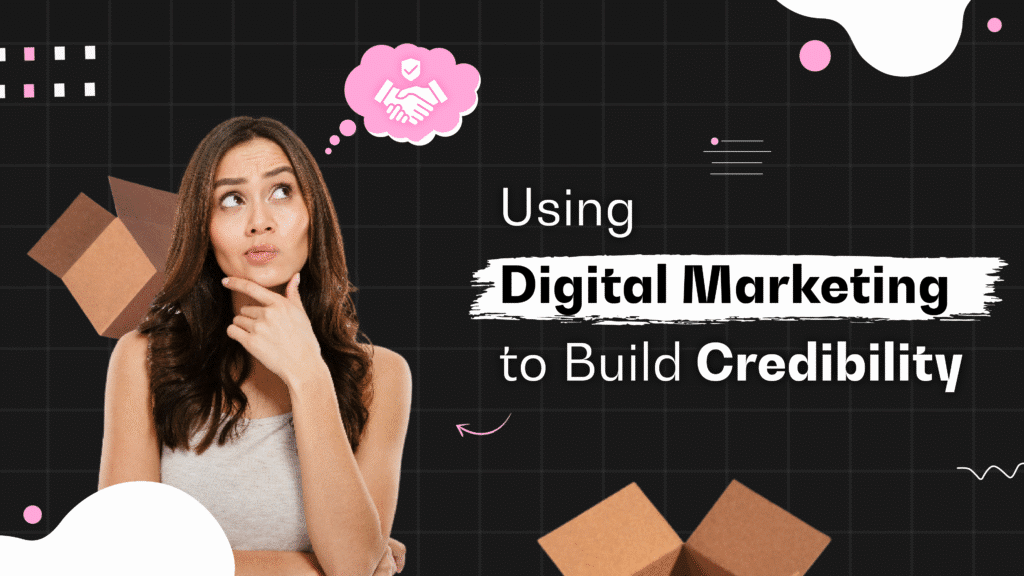The UI UX design field is evolving as we speak, and most designers, especially beginners, are worried.
They just don’t know how to keep up with AI and trends that are shaping the future of UI UX design.
Well, if you’re confused whether designers have a future, you don’t need to worry because the global UX services market, valued at USD 4.68 billion in 2024, is projected to grow to USD 54.93 billion by 2032.
It’s clear that the demand is continuously rising, but you need to make sure you’re well prepared for the future and the rising trends in the UI UX industry.
In this article, we will be revealing those details with you, including the current state of the market, key trends, new designer workflow, and some actionable tips you can implement.
Current State of UI UX Design Field
In 2025, UI/UX design is experiencing rapid change due to technological evolution and massive changes in users’ expectations.
As we have already discussed, the market is rapidly growing and showing an annual growth rate of 36%.
Plus, the World Economic Forum reports UI and UX design as the 8th fastest-growing job by 2025.
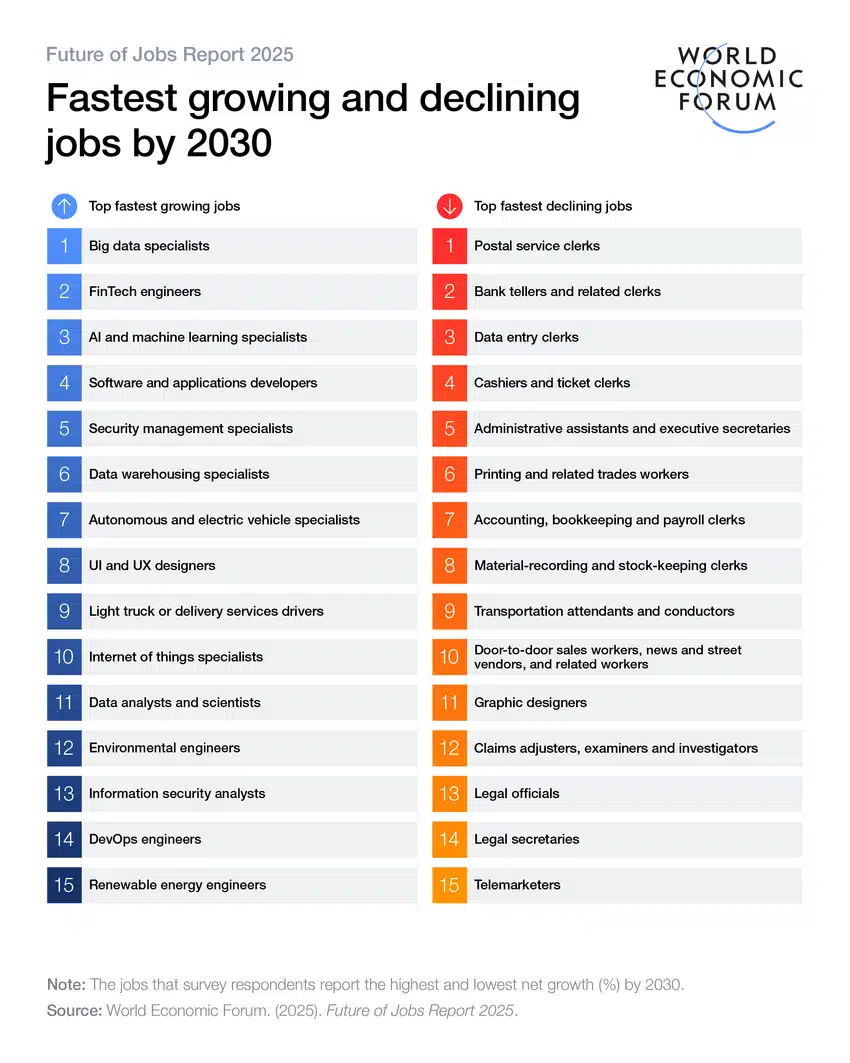
Moreover, the current state reveals several key characteristics defining modern UI UX design:
1. Evolution of Tools
UI UX designers have started moving from manual processes to AI-assisted workflows as AI-powered features are continuously getting integrated into tools like Figma.
The tools are the same, but they’re evolving as AI-first in their operations.
2. Impact on Businesses
Companies are recognizing the tangible value of a good design, and actually, it’s good for them too.
Because the organizations that prioritize design have achieved 32% higher revenue growth and 56% higher total return to shareholders.
These numbers have elevated UI UX design from a nice-to-have to a strategic business need.
3. Rise in User Expectation
You should know that modern users are becoming more sophisticated and demanding. They expect websites to load in under 2 seconds; otherwise 47% of them immediately leave the site.
Plus, almost 6 out of 10 users won’t recommend a business if its mobile experience is poor, showing the critical importance of seamless cross-platform experiences.
4. Focus on Accessibility & Inclusion
Designers are currently prioritizing accessibility and inclusive design, which means you need to work on creating experiences for all users, regardless of their abilities.
Data also shows that companies implementing top design practices grow twice as fast as the industry benchmark growth rate, making it clear to us that unique UI UX design is no longer optional but essential for survival.
Key Trends Shaping the Future of UI UX Design
The emerging trends in UI/UX design are enhancing users’ experience while interacting with the product.
You need to know these trends so that you can follow them and customize your design to keep up with the industry requirements.
Here are the key trends in the UI/UX design field:
1. AI-Powered Design & Personalization
AI is changing the future of UI UX design by enabling new levels of personalization and automation.
Digitaldefynd research shows that by 2030, 90% of user interfaces will engage AI to customize experiences, completely changing how users interact with digital products.
If you’ve noticed, AI-powered design tools are already analyzing user behavior, predicting needs, and personalizing real-time experiences.
Companies like Spotify and Netflix have successfully used AI-driven recommendations to show music and shows, respectively.
As Frank Chimero said, “People ignore design that ignores people.”
AI-powered tools make sure that designs never ignore people by continuously learning from and adapting to user preferences.
2. Immersive & 3D Experiences (AR/VR/Mixed Reality)
The future of UI UX design is mostly three-dimensional and immersive.
70% of businesses are expected to integrate Augmented Reality (AR) or Virtual Reality (VR) elements into their user interfaces, marking an important shift from traditional 2D interactions.
This change is already visible in practical applications:
Augmented Reality Integration:
E-commerce platforms like IKEA Place allow users to visualize furniture in their actual space before purchasing, which reduces uncertainty and improves conversion rates.
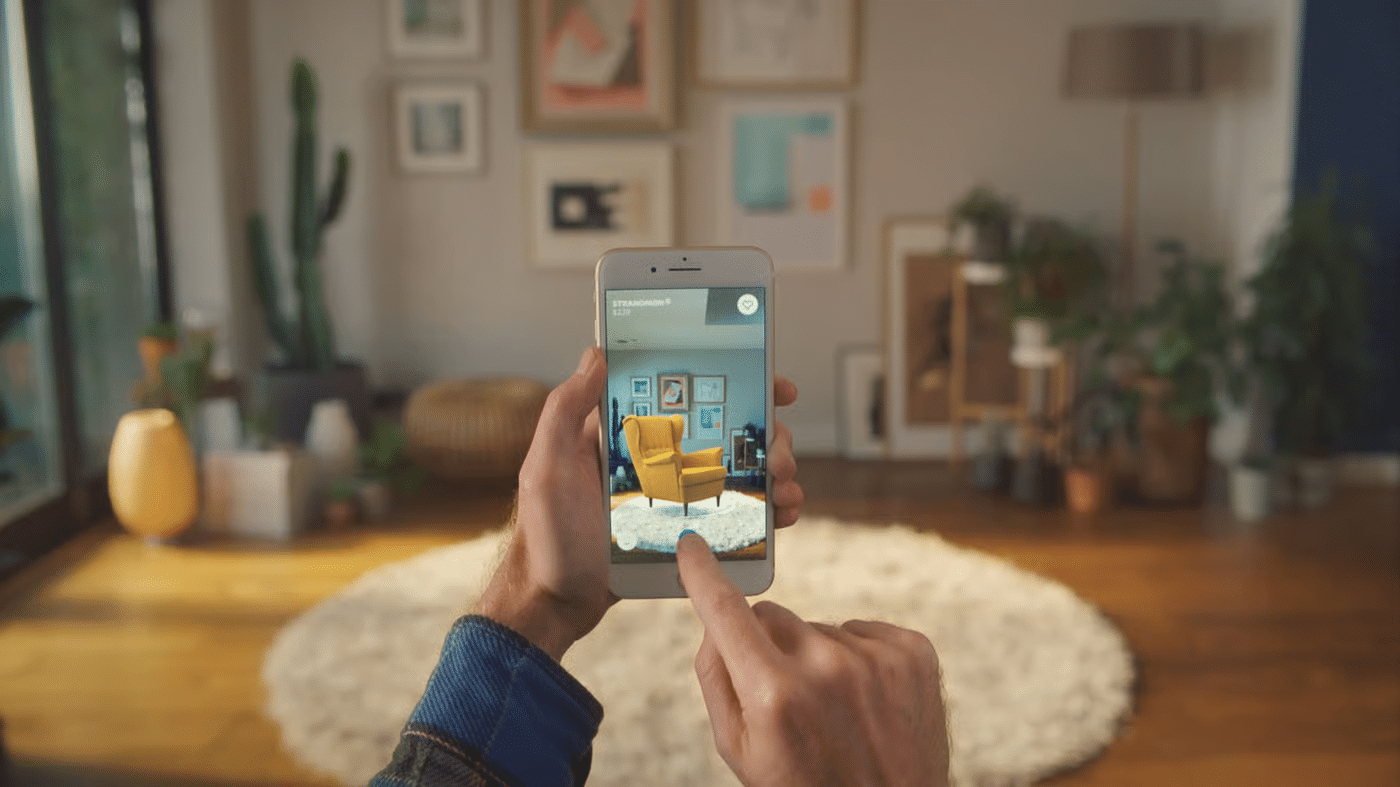
Virtual Reality Environments:
VR is creating entirely new patterns for user interaction, especially in sectors like education, training, and entertainment.
Mixed Reality Applications:
The merge of AR and VR technologies is creating mixed reality experiences blending digital and physical worlds, requiring designers to think beyond traditional screen-based interfaces.
To implement these technologies effectively, designers are now using WebGL and Three.js to create interactive 3D UI elements to ensure smooth user experiences across multiple devices.
3. Voice, Gesture & Zero‑UI
The voice user interface (VUI) market is expected to reach $41.8 billion by 2035, reflecting a shift toward more natural interaction methods.
This trend covers several key developments:
Evolution in Voice Command:
The success of technologies like Google Assistant and Alexa has led to voice interactions becoming more sophisticated.
And because of that, designers are now learning to create hands-free navigation systems that support traditional interfaces rather than replace them completely.
Gesture-Based Interactions:
Mobile applications are rapidly using gesture controls to improve usability and allow users to navigate through swipes, pinches, and tilts.
This approach maximizes screen space while providing intuitive interaction methods.
Zero-UI Interfaces:
The concept of interfaces that expect user needs without explicit commands is gaining focus in the industry.
These systems use contextual awareness and predictive algorithms to provide information and active functionality.
The COVID-19 pandemic expedited the adoption of no-contact interfaces, particularly in public spaces like ATMs and elevator controls, making voice and gesture controls essential for health and safety considerations.
4. Neumorphism / Glassmorphism & New Aesthetics
Visual design trends are moving toward experiences that are more sophisticated and touchable.
Neumorphism 2.0, which is a fusion of skeuomorphism and flat design, is gaining traction with improved usability and accessibility.
Evolution of Neumorphism:
This trend adds soft shadows and highlights to create depth, offering a more tangible feel.
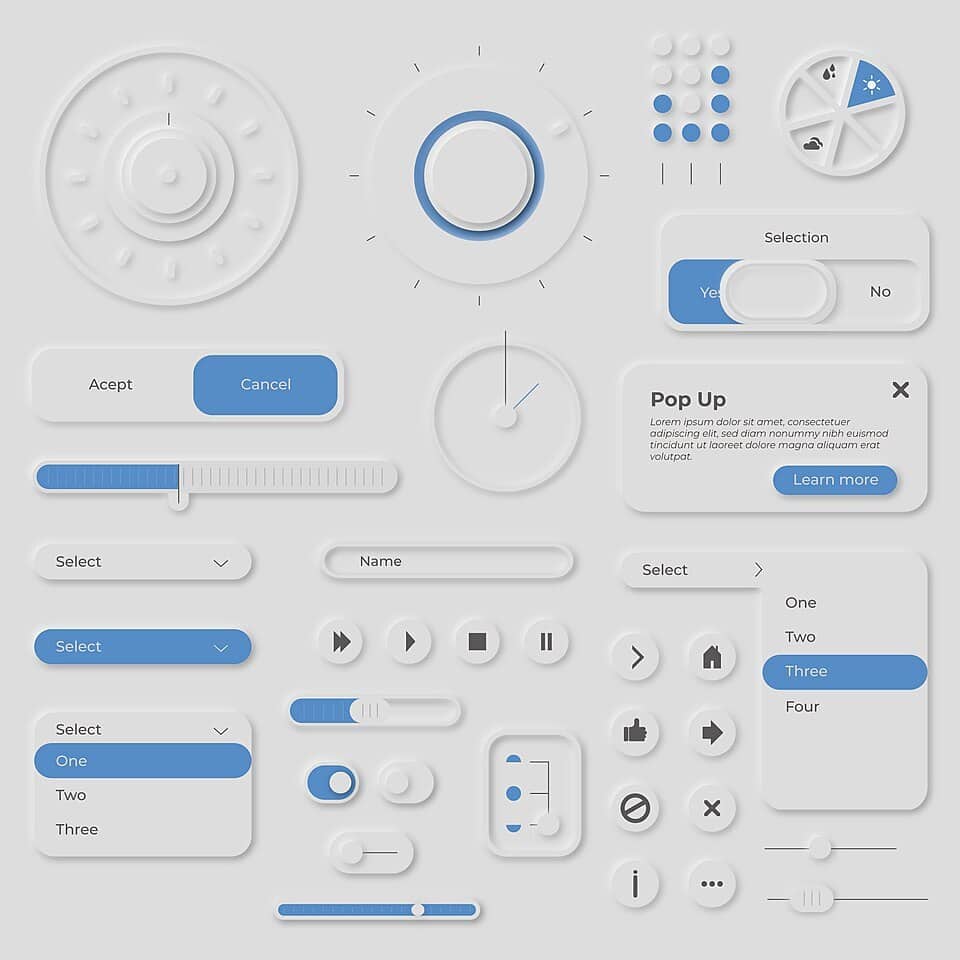
Apple’s macOS widgets are an example of this approach, which clearly makes interactions feel natural to us.
But designers must ensure sufficient contrast to comply with accessibility, as well as implement these subtle visual effects.
Glassmorphism Emergence:
This trend creates transparency effects that mimic glass surfaces, adding depth and visual interest to the design.
The aesthetic works particularly well in dark mode interfaces and creates a sense of hierarchy in layered information.
Dynamic Typography:
By 2030, 90% of websites and applications will use motion graphics, with bold typography playing an important role.
Use of variable fonts in a design enables dynamic and responsive text experiences, while animated typography enhances storytelling capabilities.
We have covered most of the trends, but for an in-depth look at the emerging trends in UI/UX design, you can consider watching this video by DesignSense:
New Designer Workflow (Evolving Roles & Skills)
The future of UI UX design is all about evolving workflows and skill sets, which is why today’s designers like you are faced with a more complicated situation that demands a mix of expertise and adaptability.
1. Integration of Multiple Disciplines:
Today’s UX designers must combine skills from psychology, data analysis, and technology.
Their role has expanded beyond wireframes and user flows to include strategic thinking, business understanding, and technical knowledge. But before learning these new disciplines, make sure your UI UX design basics are clear.
As the industry is growing, 71% of UX professionals believe AI and Machine Learning will shape the future of UX, requiring designers to develop complementary skills.
2. Collaboration with AI:
Instead of taking over the work of human designers, AI tools are enhancing their abilities.
Designers are now learning how to work hand-in-hand with AI-powered systems, leveraging machine learning algorithms to analyze user data and make well-informed design choices. This partnership leads to smoother workflows and insights driven by data.
3. Specialization with Trends:
The number of UX designers is expected to grow from 1 million to 100 million by 2050, which is driving increased specialization.
And to cater to this challenge, you need to build deeper expertise by focusing on specific areas like UX research, interaction design, voice UI design, or accessibility consulting, like other designers.
The change in designer workflow focuses on continuous learning, as Donald A. Norman said:
“Human-centered design is a philosophy, not a precise set of methods, but one that assumes that innovation should start by getting close to users and observing their activities.”
Actionable Tips for UI UX Designers
If you want to thrive in the future of UI UX design, you must adopt some strategic approaches that include emerging trends while maintaining core design principles.
Here we have compiled some tips for you that you can work on to be future-ready.
Develop AI Collaboration Skills
You need to learn how to use AI tools in your projects effectively.
This process will include understanding how to interpret machine learning insights, use AI-powered design platforms, and integrate automated suggestions with human creativity.
Master Cross-Platform Design
Users always need smooth experiences across multiple devices, and to match their expectations, you need to develop expertise in responsive design, progressive web applications, and cross-platform consistency.
Also, do remember that 53% of users instantly abandon sites that take more than 3 seconds to load, making performance optimization a crucial part
Learn Emerging Technologies
As discussed above, you must gain hands-on experience with AR/VR design tools, voice interface design, and gesture-based interactions.
Even if you have a basic familiarity with these technologies, it will provide you with competitive advantages as the industry adoption increases.
Practice Ethical Design
Billy Gregory once jokingly said:
“When UX doesn’t consider ALL users, shouldn’t it be known as ‘SOME User Experience’ or… SUX?”
So, you always need to consider the broader impact of your design decisions, including privacy and digital well-being.
Conclusion
As a UI UX designer, you don’t need to worry about the future of your industry because, as we mentioned, the field is growing constantly.
It’s just that you need to be updated on the new and upcoming trends like AR, VR, voice user interface, and many more that we discussed.
And remember, the future of UI UX design is not just about better interfaces but more about better human experiences in this digital world.
If you’re looking for UI/UX design services customized to your needs and optimized for your users’ expectations, you can contact us for a quick discovery call.




